 Given the following mutually incompatible axioms, what do you do?
Given the following mutually incompatible axioms, what do you do?Axiom 1: It's beautiful outside, and it's the week-end.
Axiom 2: Your supervisor is expecting an article from you.
The solution? As you've probably ascertained from the photograph to the right, you dust down your Mobile Gongfucha Platform (MGP) and head out into the garden. You're outside, but you're close enough to your desk to feel guilty enough to (eventually) get back to work.
It's high time that a few long-standing inaccuracies were straightened out regarding Xizihao, the first of which is its name. It's "xizihao" [Double-happiness character brand], and most definitely not "xizhihao". Absolutely, this is a Taiwanese product, but by adopting the "x" and "zh" nomenclature, we are already crossing the Taiwanese Strait onto the Mainland and attempting a Pinyin spelling, so we may as well make it correct.
On a slightly less defensible note, the Pinyin spelling of the manufacturer is "Sanhetang" [three-together hall], and not "San Ho Tang". I'm not certain if the latter is Wade-Giles, so do forgive me if it is - in which case it's entirely appropriate, given that the company is Taiwanese. Obviously, the mountain is "banzhang", and not "banzhan" (as appears on my packet), but that's probably a good old-fashioned typo, rather than a conscious error.
Pedantry aside, what else do we know about this cake? I've not seen any reviews for this 2006 Banzhang, and would gladly be corrected. It claims to be a "shengtai" [ecology/natural-habitat] tea, which brings to mind all sorts of camphor-trees-instead-of-pesticide ideas. Of course, these are unquantifiable and uncontrolled terms, but we can dream.
Caledonian Springs @ 100C; 20cl shengpu pot; "normal" quantity; 1 rinse.
 Dry leaves:
Dry leaves:Truly desirable. Exquisite, long, full-bodied leaves with many silver tips. A lovely sheen over all. The cake is a fine mixture of dark browns, rich reds, and fresh greens. Classical, crisp aroma, with a healthy basis of smooth mushroom. Say what you like about Sanhetang (!), but they can definitely select fine leaves.
10s, 15s, 20s, 25s, 25s:
Light, golden soup, filled with tip-fur. The aroma is long and rich, unusually for a young shengpu, with plenty happening: the base of mushroom is present, with a fresh sweetness overlain.
The flavour is initially camphor, and astringent - but not unpleasantly so. "Very strong and uncompromising." The feeling is smooth, the chaqi is very positive.
The aftertaste is sweet, and light. The leaves in the pot are surprisingly gentle in scent - I was expecting much more brutality from a banzhang.
The pure astringency in this tea makes it hard to enjoy in a long sitting. I took a break and came back to it, and was refreshed again. It is particularly green in the throat.
Used leaves:
Beautiful, big, and green throughout. Some fairly chopped; is this what Guang means by "a more affordable Xizihao"?
Overall:
Powerful, and very green. It certainly feels as if it has the legs to reach a good age, and there is plenty of mushroom-and-camphor complexity occurring underneath that bodes well. As one of the least expensive Xizihao products, this could be worth a flutter. It is bountifully energetic, and not really a "drink it now" experience.
Addendum:
(4 July, 2007)
Keeping the infusions very short (~3-5s) and using more leaves (~6-7g) reveals a finery in this tea that I missed before. It is not overpowering, brewed this way, and the sweet-but-simple character marches on for many infusions. There is a lovely oiliness that I missed the first time around, which is surely a good sign, clinging to the tongue and moistening the lips with sweetness.
The caffeine content is high - it sits in my mind quite recognisably - making this not suitable for my usual evening sessions (yet).
(4 July, 2007)
Keeping the infusions very short (~3-5s) and using more leaves (~6-7g) reveals a finery in this tea that I missed before. It is not overpowering, brewed this way, and the sweet-but-simple character marches on for many infusions. There is a lovely oiliness that I missed the first time around, which is surely a good sign, clinging to the tongue and moistening the lips with sweetness.
The caffeine content is high - it sits in my mind quite recognisably - making this not suitable for my usual evening sessions (yet).
Addendum
(29 March, 2008)
We are revisiting this cake about about a year later, using very similar brewing parameters to the previous sessions - my brewing configuration has not changed in a long time.
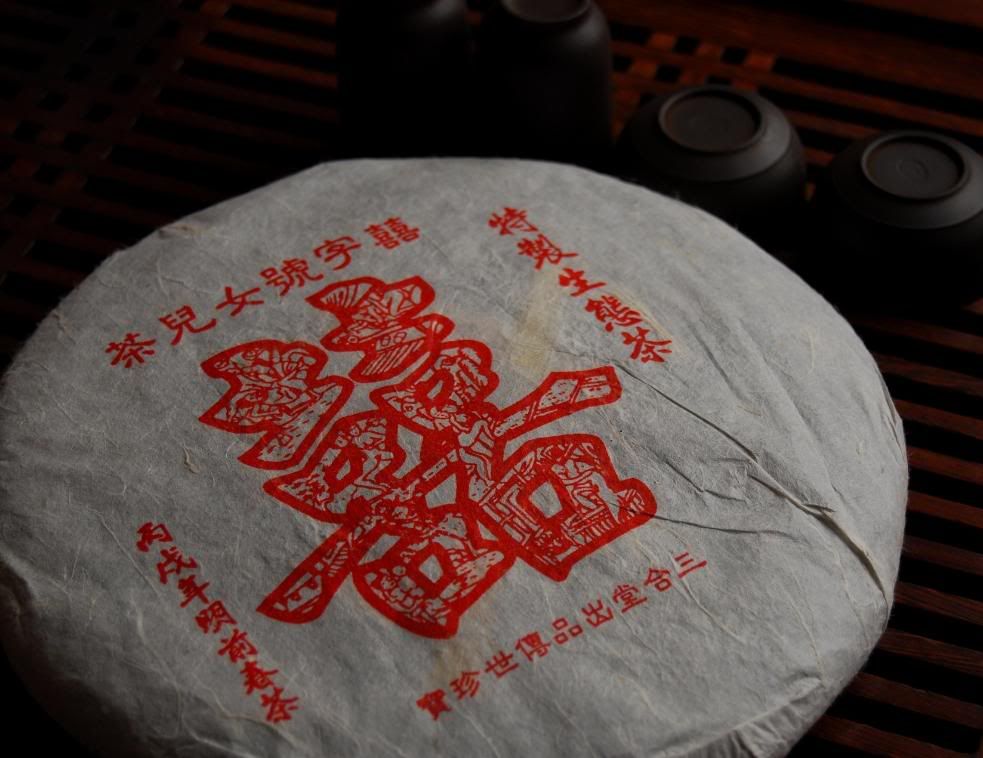
Previous encounters with this tea showed green astringency, sharp character, and the recommendation for storage.

The cake is becoming much darker, even in its two years. The English humidity has been kind to it: what was once green has been "caught in the act" of turning into rich tobacco. The green can be noticed, but it is blending more and more into a base of rich tobacco. The complexity of flavour has dramatically increased, causing Lei to say, "There is so much flavour in here - like a proper cheese."
The body remains thick; the huigan remains pronounced. It is very palatable, and we drink 11 infusions without hesitation.
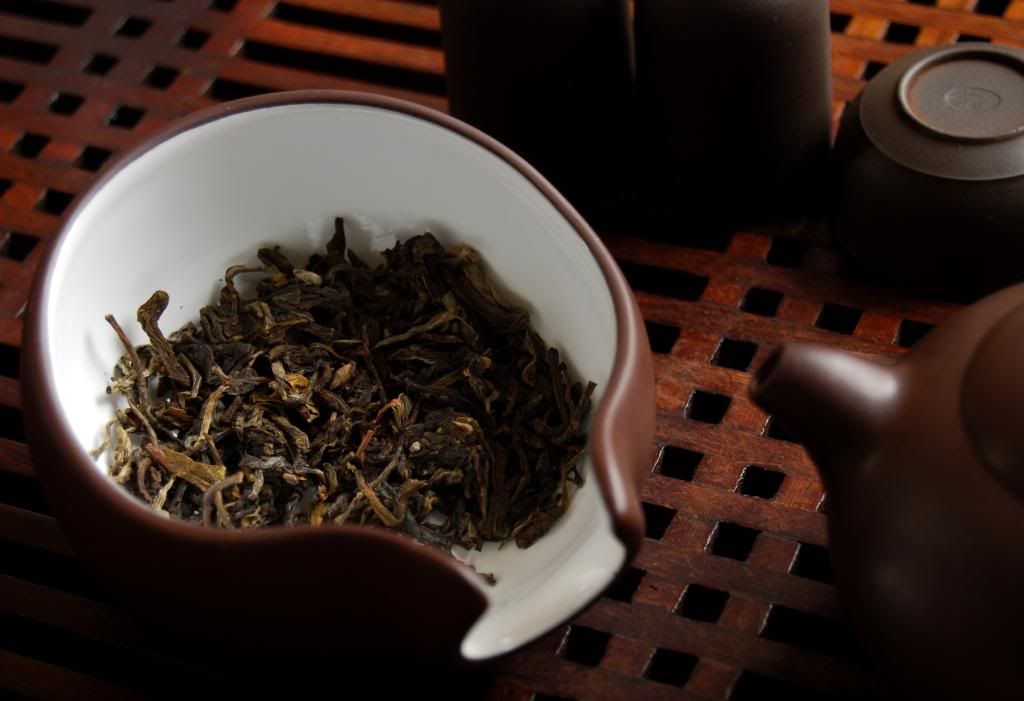
Coming back to this tea, I did not previous note the very small size of the leaves: there are many tips, but a distinct absence of the chunky "glamour" leaves that adorn more recent Xizihao cakes. I don't consider this a disadvantage. This tea has a rich variety of deep colours and textures in the leaves, and the aroma has become a deep tobacco in correspondence with its flavour.
A fascinating glimpse into the maturing process.
Addendum
October, 2011
It seems that I don't get many lazy Sunday mornings, lately. That's fine - it's for a good reason. However, when those rare times do occur, it's time to celebrate. Reaching for an old favourite, at the behest of Shah, let's revisit this 2006 cake after five years of English storage.
I forgot how naughty are the wrappers of Xizihao cakes from this era. Perhaps you might get a glimpse from the photograph below...
It has been so long since I tackled a Xizihao cake, that I also forgot the pomp and circumstance that accompanies them - here, a Menghai-style golden ribbon...
My first impression is that the leaves have continued their descent into darkness, which is A Good Thing. I am also reminded of the small and fragmented nature of the leaves, presumably the cause of the low price, and "accessible" moniker.
Checking my records, I cannot quite believe how inexpensive this cake was when I bought it: $35. That seemed a lot of money at the time. I would probably have bought much more at that price, these days. Such is the passage of time...
The soup has darkened from yellow (shown in the old photographs far above) to the orange pictured immediately above. This is in keeping with its progress: it has deepened, and filled out into a dense and sweet pu'ercha, but it still retains its kuwei [good bitterness] from youth.
I'm beginning to think that English storage could be very good for people with my taste in pu'ercha: it is a different kind of storage to the humid, dark charms of Singapore and coastal south China. It has the sharp potency of a north-China cake, but the constant humidity of England (compared with, for example, dry Beijing or Kunming) seem to be most favourable to the tea, keeping it alive, and nurturing it gently.
While this won't prevent me indulging my love of humid Asia-Pacific pu'ercha, I remain hopeful. The evidence is beginning to look rather good.


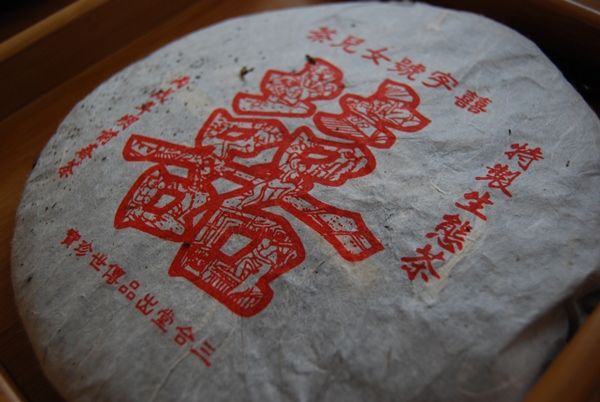
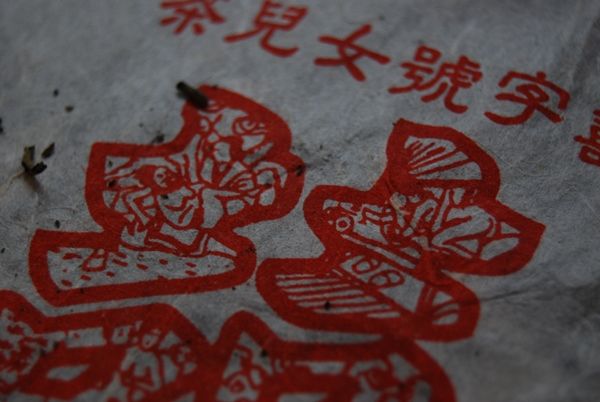

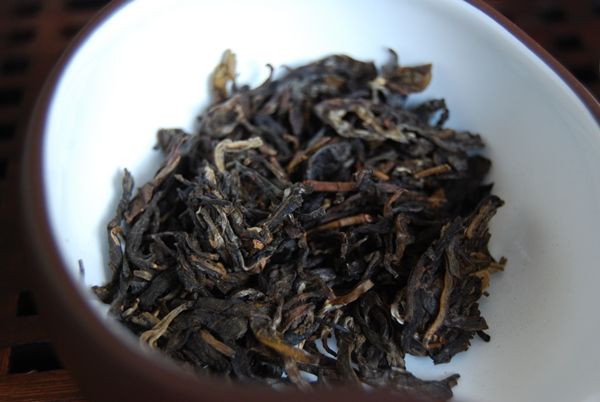
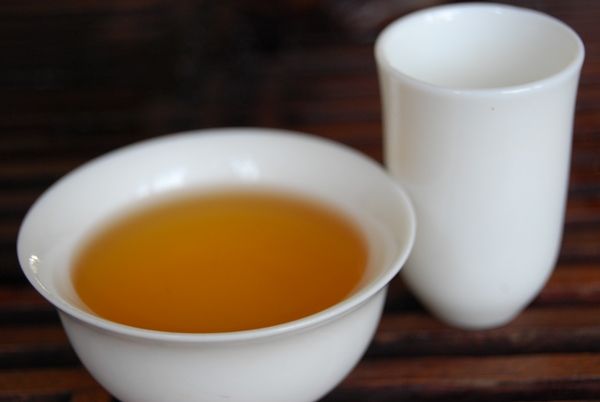
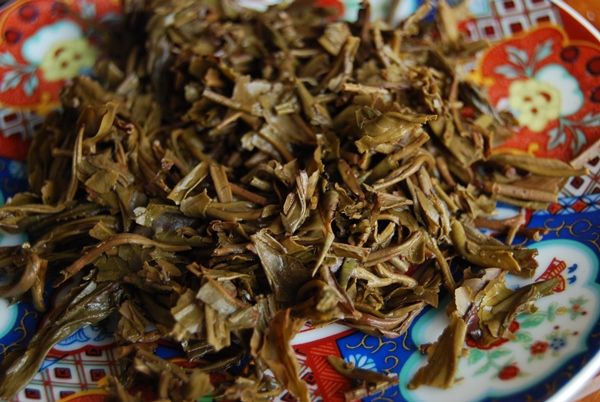
10 comments:
Love the book
You, sir, have particularly fine taste!
Toodlepip,
Hobbes
I think another revisit would be very interesting here.
The cousin of this tea that I have, XZH Nuercha brick, can be truly excellent (in the Dayi+++ sense rather than high-end single location sense) and is extremely sweet and reduced in astringency.
--shah8
Let's do it - I'll try and drink it this week-end, although the double-sample Chen Zitong pack just arrived from Houde... :)
So far, the only thing I might say about Atlanta aging seems to be that oilier cakes tends to "age" faster and mouth aroma tends to be more active. Astringency tends to be killed quickly. The aging is also pretty fast acting--puerh goes into Atlanta time in about 6 months and then slow down, if they do much at all. I think Atlanta is a combination of Jinghong and Kunming. The aromatic complexity, I think is due to aging at height, and not dryness. Or perhaps having seasons while humid.
--shah8
What's the humidity like there? I think that's rather important.
Toodlepip,
Hobbes
I assume your indoor RH can't be much to speak of during the winter; it's temperate climate close to freezing after all. Good to see that puerh can survive and even thrive even under such conditions, and that they don't dry out completely.
As all things that concerns western puerh storage never really stands high above guesses, I could be wrong to say so, but maybe the wet summers you endure are to be credited for most of your success (or the poor insulation skill of english builders perhaps).
Johan
Looking at things closely, I think the difference between Kunming and Jinghong (and Atlanta as well), is that Kunming has a serious dry season. It's not that dry a place, overall.
--shah8
Johan and Shah,
Good points.
I only have outdoor data for relative humidity, where it might surprise you to learn that England is always higher in RH than Guangzhou.
Of course, that's not true for temperatures. :)
Toodlepip,
Hobbes
Well, as you probably know, RH is humidity relative to temperature (cold air holds less moisture than warm air). Here in Sweden for example, with a couple of degrees below freezing, we often have 100% RH outside, but when the same air are heated up inside the house the RH drops to sometimes below 10%.
Scary stuff, I know, but with the warmer winters you get I'm sure you are a bit better of than we are. Trust in what your tea is telling you!
Best wishes
Johan
Post a Comment